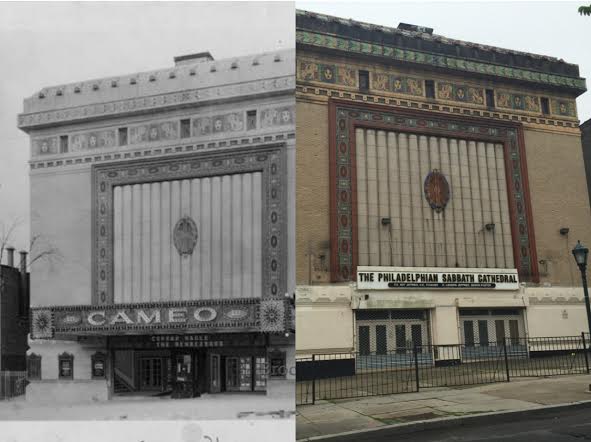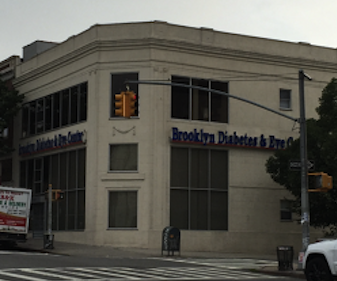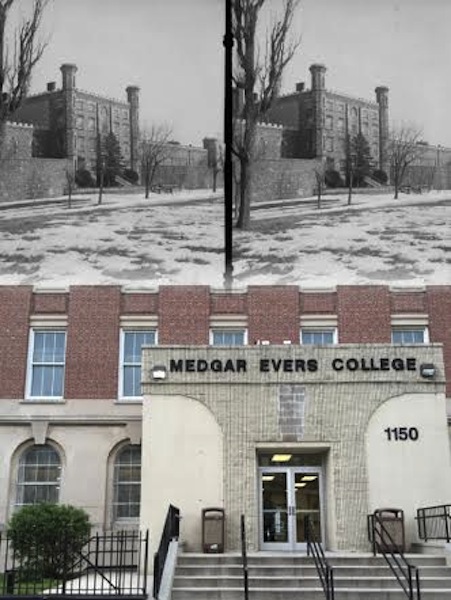5 Places That Have Left Crown Heights & What Replaces Them



Let’s take a look at five places of yesteryear in Crown Heights and the places that replaced them:
– located at Eastern Parkway and Nostrand Avenue opened as the Cameo Theatre in 1924. Once taken over by Lowes in 1925, its name changed – the “C” became a “K.” According to a Brooklyn Eagle article dated May 29,1927, the 1500 seat theatre used its open air roof area to show the same movie that was playing in the theatre below (weather permitting, of course) How cool is that? The theatre closed in 1973 and today much of the building remains as the Philadelphian Sabbath Cathedral.
-a cafe and bowling resort, took up Bedford Avenue between Degraw Street (now Lincoln Place) and Eastern Parkway. It dated back to the late 1800s and remained there for about forty years. The Bedford Rest, contends the Brooklyn Eagle, was one of the most widely known resorts in the borough and one of the most prosperous before the advent of prohibition (from 1920 to 1933 the sale, production, importation, and transportation of alcohol was banned by constitution in the USA). Oh my, how dry I am!
According to Wilhelmena Rhodes Kelly’s book,”Images of America: Crown Heights And Weeksville,” Years later, after the Bedford Rest folded, the beautiful Town Hill Supper Club resided in its place. Town Hill was the preferred spot to be, providing its elegant and stylish customers with delicious food, great entertainment, and dancing. Town Hill featured some of the best and brightest stars in the 50s and 60s: Dinah Washington, Jackie Wilson, The Coasters, Della Reese, Ray Charles, and Sam Cooke.
In the 70s, The Muse, the neighborhood museum, drew many exciting artists. Jazz musicians regularly ran jam sessions at its 1530 Bedford Avenue location. Poets created there and workshops offered an array of classes in African art, music, and creative activities. The Muse was another important piece of Crown Heights history.

As these renewing energies (perfect fractal patterns) from the cosmos enter our field and upgrade our genetic coding our “junk” DNA rejoins and expansion of our lives increase and abilities and skills long forgotten about come back on line. http://cute-n-tiny.com/tag/photoshop/ cialis price

– entrance faced Crown Street and stretched to Rogers Avenue to Carroll Street to Nostrand Avenue. It opened in March of 1848 and by August of 1865 this institution made the New York Times: “Grave Charges Against the Keeper of the Prison. Prisoners Improperly Fed and Brutally Beaten, and the Discipline of the Prison Loose.” Brooklyn’s Pen which housed male and female felons and prisoners sentenced to more than thirty days was torn down in 1906.
In 1970 Medgar Evers College, born out of grassroots struggle and community persistence, moved into the space to meet the educational needs of Central Brooklyn. Named in honor of murdered civil rights leader, Medgar Evers, the college develops, enriches, and “releases” successful and learned citizens into our society. What an impressive 360!
– located at 1346 President Street and Brooklyn Avenue. According to the The St. Giles Foundation, The House of St. Giles the Cripple was founded by Sister Sarah, an Episcopalian nun, and was one of the country’s first hospitals to concentrate on orthopedic care and treatment for children. St. Giles moved to President Street in 1916 during the great polio epidemic and beds remained filled. However, with the discovery of the polio vaccine, patient numbers decreased significantly and the hospital subsequently closed.
Today, St Marks Day School occupies the building. Established in 1977, St. Marks prayerfully nurtures and skillfully develops students from nursery to eighth grade (boys and girls).
– at Dean Street and Troy Avenue was founded and operated by African Americans in the Weeksville section of Brooklyn (now Crown Heights) In July of 1894 the New York Times praised Howard as a comfortable and spacious place that provided excellent care and teaching for nearly 150 Colored orphans.
Weeksville is still very present at this location. Today you can visit the Weeksville School aka PS 243. The school’s motto is “Together we can make a difference.” The school is a uniform school and students are expected to be properly dressed in their uniform daily and strive for success.

Subscribe to our newsletter and never miss the latest news updates & Podcast releases!
